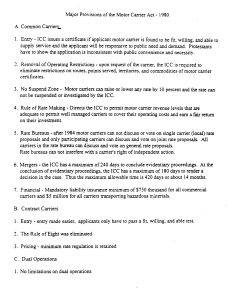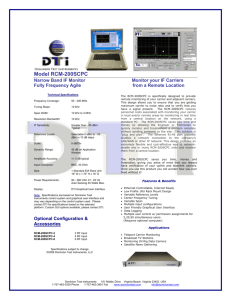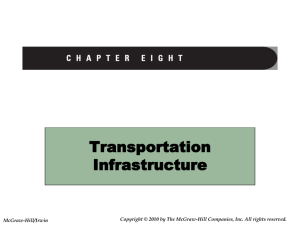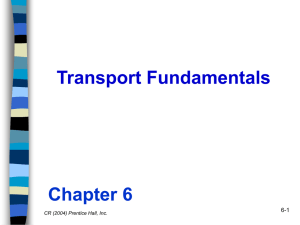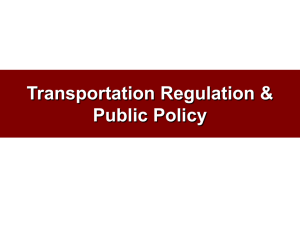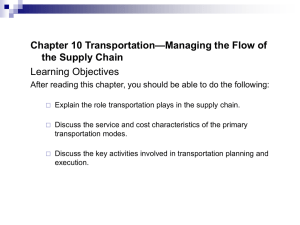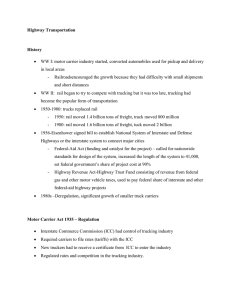transportation cost
advertisement
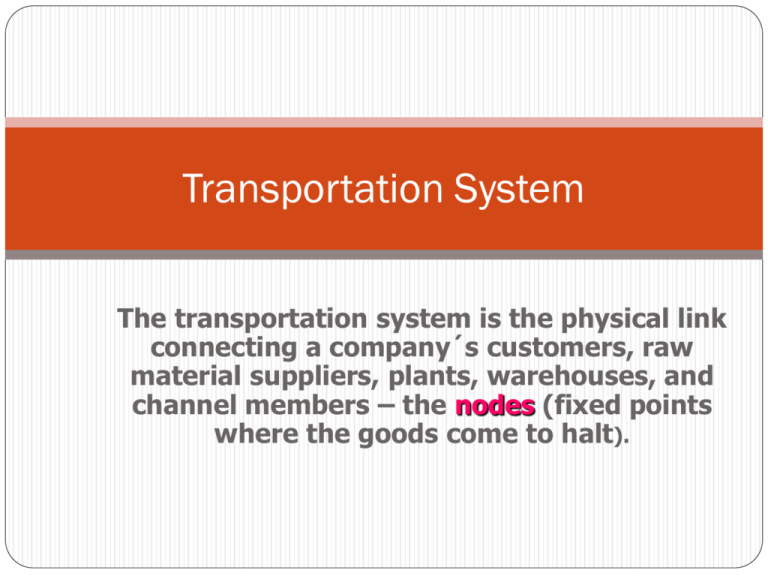
Transportation System The transportation system is the physical link connecting a company´s customers, raw material suppliers, plants, warehouses, and channel members – the nodes (fixed points where the goods come to halt). Modal Choice Basic modes (rail, water, truck, air, pipeline), Intermodal transportation (uses two or more modes to provide service, e.g. railtruck, rail-water). Carrier Selection Determinants I. Firms use to evaluate the alternative modes various criteria: transportation cost (include the rates, minimum weights, loading and unloading facilities, packaging, special services), transit time (includes the time for pickup, delivery, terminal handling, and for movement between origin and destination terminals), Carrier Selection Determinants II. reliability (the consistency of the transit time a carrier provides), inventory and stockout costs (lower transit times result in lower inventories, but if the transit time is not consistent, the firm must increase the inventories), capability (the carrier´s ability to provide the equipment and facilities the movement of a particular commodity requires), Carrier Selection Determinants III. accessibility (the availability of carrier routes and terminals in shipping location, the geographic limits of a carrier´s route network – rail lines or waterways), security (the arrival of goods in the same condition they were in when tendered to the carrier). Railways - Advantages railways are capable of transporting all commodities, huge capacity allows the railways to be a decreasing-cost industry, primarily long-distance, large-volume movers of low-value, high-density goods (forest, mines, agriculture), relatively low rates, weather conditions disrupt rail service less than they disrupt the service of other modes. Railways - Disadvantages the accessibility of rail transportation does have limitations, require a large investment in terminals, equipment, and trackage to begin operation, rather long transport time (the carrier consolidates boxcars into train units), moving goods by rail requires considerable packaging and resultant packaging costs. Motor Carriers - Advantages the motor carrier can provide transportation service to all shippers, move high-value commodities requiring personalized service, require the low capital (low fixed cost), does not require extensive terminal and equipment investment and does not invest in its own highway (the government builds and maintenance the highway, and the carrier pays for highway use), high availability to provide service to any location (high accessibility), lower transit time than rail and water, but higher than air. Motor Carriers - Disadvantages high variable cost, relatively high rates, weather conditions and highway traffic can disrupt motor service, motor carries transport primarily manufactured commodities over relatively short distances. Water Carriers - Advantages primarily long-distance movers of low-value, high-density cargoes that mechanical devices easily load and unload (mineral, agricultural, forest products), lower cost than for rail, motor and air, water carrier requires no investment for the way, only capital necessary for equipment. Water Carriers - Disadvantages slow movement (the highest transit time of all modes), weather conditions affect operations (ice and low water levels), water transport has greatly limited accessibility (shippers have to use additional land transport). Air Carriers - Advantages air carriers do not invest in a airway, speed (the lowest transit time over long distances), necessary for moving emergency shipments or shipments that are highly perishable. Air Carriers - Disadvantages the principal business is the passenger movement, cost structure consists of high variable costs in proportion to fixed costs, quite high equipment cost, high transport cost (rate), limited accessibility (firms must use land carriers to transport freight to and from airport), weather conditions can interrupt air service (increased transit time). Pipelines - Advantages low variable costs, low rates, weather conditions do not disrupt service. Pipelines - Disadvantages not suitable for general commodity transportation (inability to transport solids), limited accessibility, quite slow speed (< 15 km/h), high fixed costs, high investment in the line, terminals, and pumping stations.


